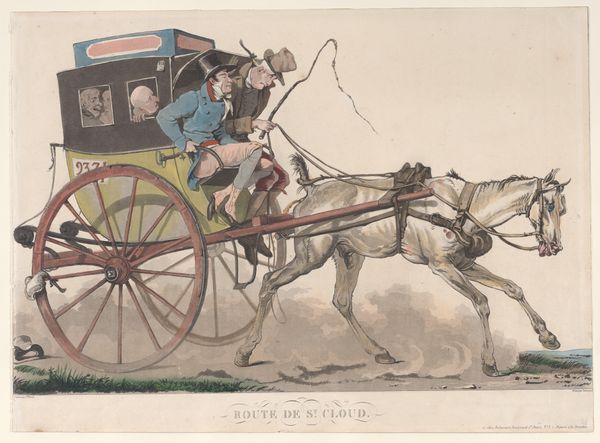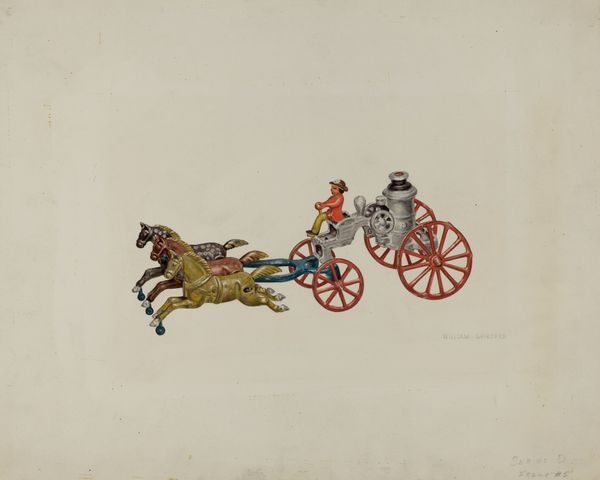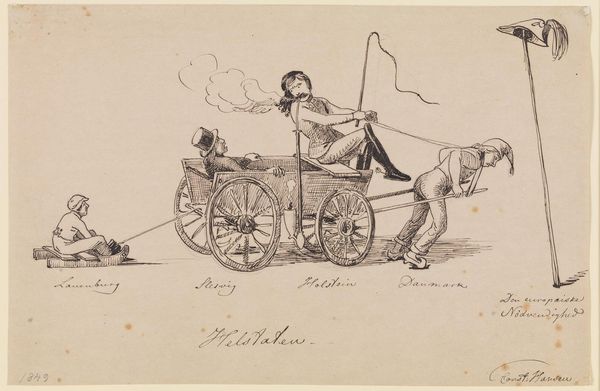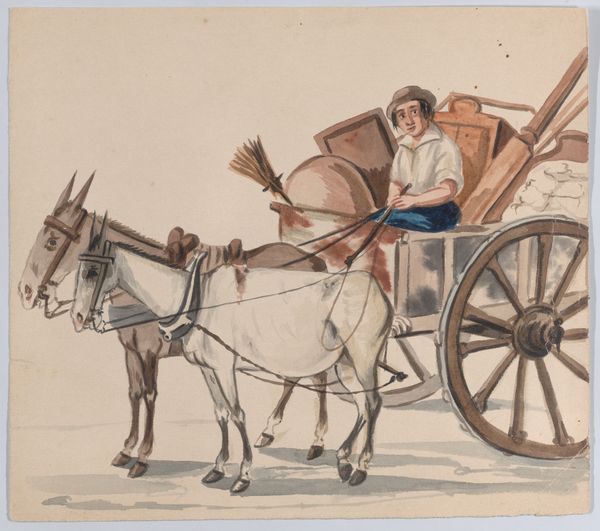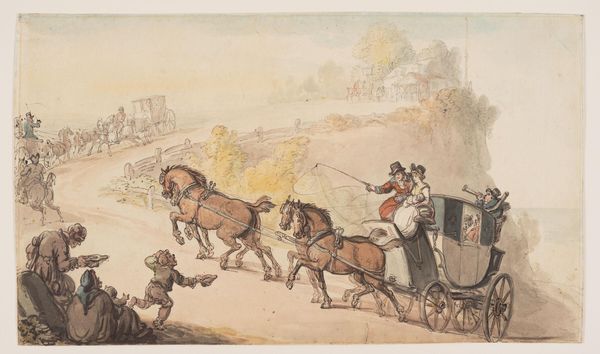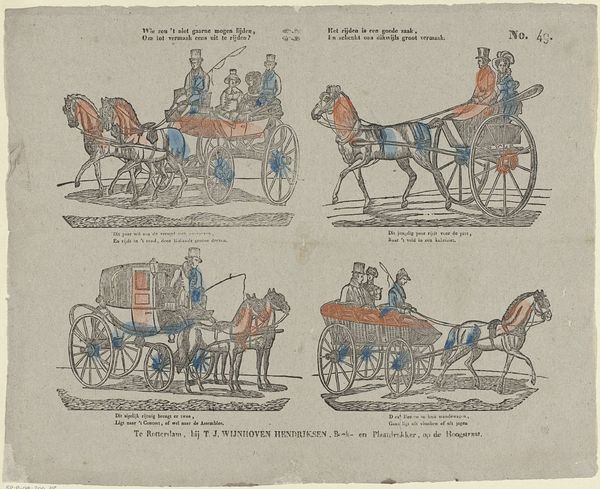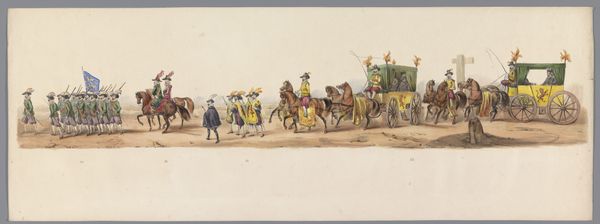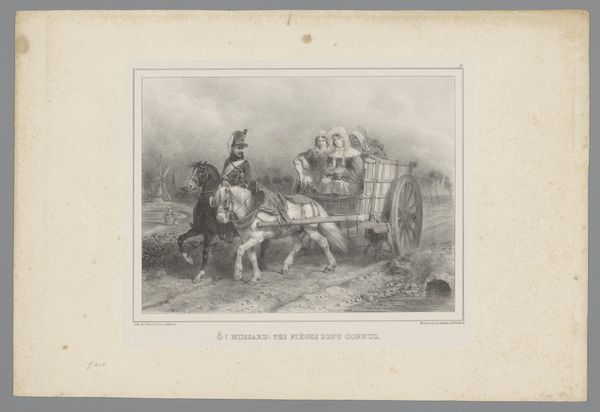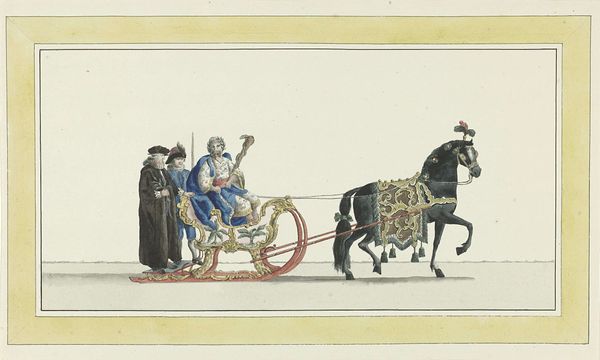
print, engraving
#
portrait
# print
#
romanticism
#
cityscape
#
watercolour illustration
#
genre-painting
#
engraving
#
watercolor
Dimensions: height 210 mm, width 242 mm
Copyright: Rijks Museum: Open Domain
Curator: Welcome. This print, dating roughly from 1815 to 1878, is entitled "Drie mannen in een rijtuig" by Gaetano Dura. Editor: My initial reaction is one of somewhat comical unease; the driver, perched precariously, brandishing his whip—it suggests a rather frantic, unstable social scene. Curator: Note the deliberate diagonal composition, propelling the viewer's eye from the lower left—with the small dog—upwards and rightwards toward the escaping horses. This deliberate, almost theatrical arrangement is consistent with Romanticism. Editor: True. But it's the figures themselves that intrigue me. We see what appears to be a carriage transporting religious figures—note their attire—almost careening through the streets. There's a visual tension between their apparent piety and the recklessness of their transport. What might that imply about social or religious authority? Curator: Dura has very effectively captured the textures of the scene. Observe the linear quality in the horses’ manes versus the soft wash of color suggesting ground. See the geometric structure within the framework of the carriage. These sharp delineations create the illusion of movement and emphasize formal balance and counterpoint. Editor: It feels allegorical. Consider the societal hierarchies present—the presumed wealth affording the carriage ride contrasting sharply with the labor of the driver. Is it possible Dura is hinting at a critique of social inequities within the religious and ruling classes? Perhaps also of the church’s compliance? Curator: The print employs a subtle color palette of muted earth tones contrasted by bolder hues of blue and red to define forms. It contributes to a powerful visual dynamic, drawing one's eye into the heart of the narrative conveyed here. Editor: What stays with me is the feeling of implied speed combined with implied social critique. Dura positions this scene within an ambiguous context—one where religious authority, rapid social change, and possible dissent coalesce, and its legacy is an artwork steeped in ambiguity. Curator: Indeed, its lasting appeal resides in the interplay between controlled design and dramatic energy.
Comments
No comments
Be the first to comment and join the conversation on the ultimate creative platform.
